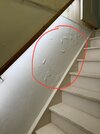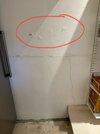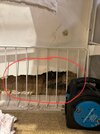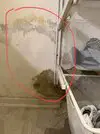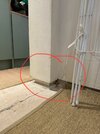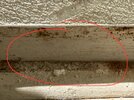- Joined
- 19 May 2024
- Messages
- 4
- Reaction score
- 0
- Country

Hello
I am looking for some advice regarding a cellar in my period property (late Victorian era) – there is a lot of quite confusing information out there!
The cellar is quiet small (maybe 12sqm; ceiling height about 195cm), located under the kitchen. It generally doesn’t feel cold (even in winter); and there is no musty/damp smell. There have clearly been some damp issues in the past, as the previous owners have done some work:
1) The brickwork had been coated with tar and plastered with normal plaster – after about 12 years, this had started coming off the walls. This was replaced with ‘lime plaster’ on the walls, some of which is on plasterboard placed away from the brickwork to improve breathability. This has been painted with lime wash paint.
2) The concrete floor was dug up and replaced with limecrete.
3) They added some ventilation by installing a fan which should run all the time (Note: I can’t see any evidence of this fan or hear one).
We now use this space as a laundry room with washing machine, tumble dryer and for hanging out clothes to dry. We’ve added a de-humidifier. The problem I have today is that there are still signs of damp (see pics below: images 1,2,4,5 show evidence of the damp; image 3 shows the brickwork behind the plaster; image 6 shows the stud wall; image 7 shows some weird bits of white debris/powder which seems to line the edges of the cellar). I’m not entirely sure what the cause of this is, or what the right remedy is.
My builder has advised that he would strip back the in-place plaster on walls and ceiling and then:
1) Inject a ‘liquid horizontal membrane’ across all wall surface areas in the cellar; apply a ‘damp seal agent’; and ‘vertical sika render’ all walls
2) create a false partition with C-studs system and aqua panel boards on all walls and ceiling
3) Design and install both passive and mechanical ventilation system to circulate air within the cellar
I don’t know too much about the proposed remedy. This sounds like it would go against the principles of a ‘breathable’ approach, and I have heard that this might lead to the water popping up as a problem elsewhere. That said, this also seems to be a fairly well established solution to dealing with damp in basements – so maybe it does the job.
Would appreciate any thoughts on why I might still have a problem (it seems like the previous owners tried a ‘breathable’ solution that hasn’t quite worked); and what the right way forward might be.
Thanks in advance!
I am looking for some advice regarding a cellar in my period property (late Victorian era) – there is a lot of quite confusing information out there!
The cellar is quiet small (maybe 12sqm; ceiling height about 195cm), located under the kitchen. It generally doesn’t feel cold (even in winter); and there is no musty/damp smell. There have clearly been some damp issues in the past, as the previous owners have done some work:
1) The brickwork had been coated with tar and plastered with normal plaster – after about 12 years, this had started coming off the walls. This was replaced with ‘lime plaster’ on the walls, some of which is on plasterboard placed away from the brickwork to improve breathability. This has been painted with lime wash paint.
2) The concrete floor was dug up and replaced with limecrete.
3) They added some ventilation by installing a fan which should run all the time (Note: I can’t see any evidence of this fan or hear one).
We now use this space as a laundry room with washing machine, tumble dryer and for hanging out clothes to dry. We’ve added a de-humidifier. The problem I have today is that there are still signs of damp (see pics below: images 1,2,4,5 show evidence of the damp; image 3 shows the brickwork behind the plaster; image 6 shows the stud wall; image 7 shows some weird bits of white debris/powder which seems to line the edges of the cellar). I’m not entirely sure what the cause of this is, or what the right remedy is.
My builder has advised that he would strip back the in-place plaster on walls and ceiling and then:
1) Inject a ‘liquid horizontal membrane’ across all wall surface areas in the cellar; apply a ‘damp seal agent’; and ‘vertical sika render’ all walls
2) create a false partition with C-studs system and aqua panel boards on all walls and ceiling
3) Design and install both passive and mechanical ventilation system to circulate air within the cellar
I don’t know too much about the proposed remedy. This sounds like it would go against the principles of a ‘breathable’ approach, and I have heard that this might lead to the water popping up as a problem elsewhere. That said, this also seems to be a fairly well established solution to dealing with damp in basements – so maybe it does the job.
Would appreciate any thoughts on why I might still have a problem (it seems like the previous owners tried a ‘breathable’ solution that hasn’t quite worked); and what the right way forward might be.
Thanks in advance!

